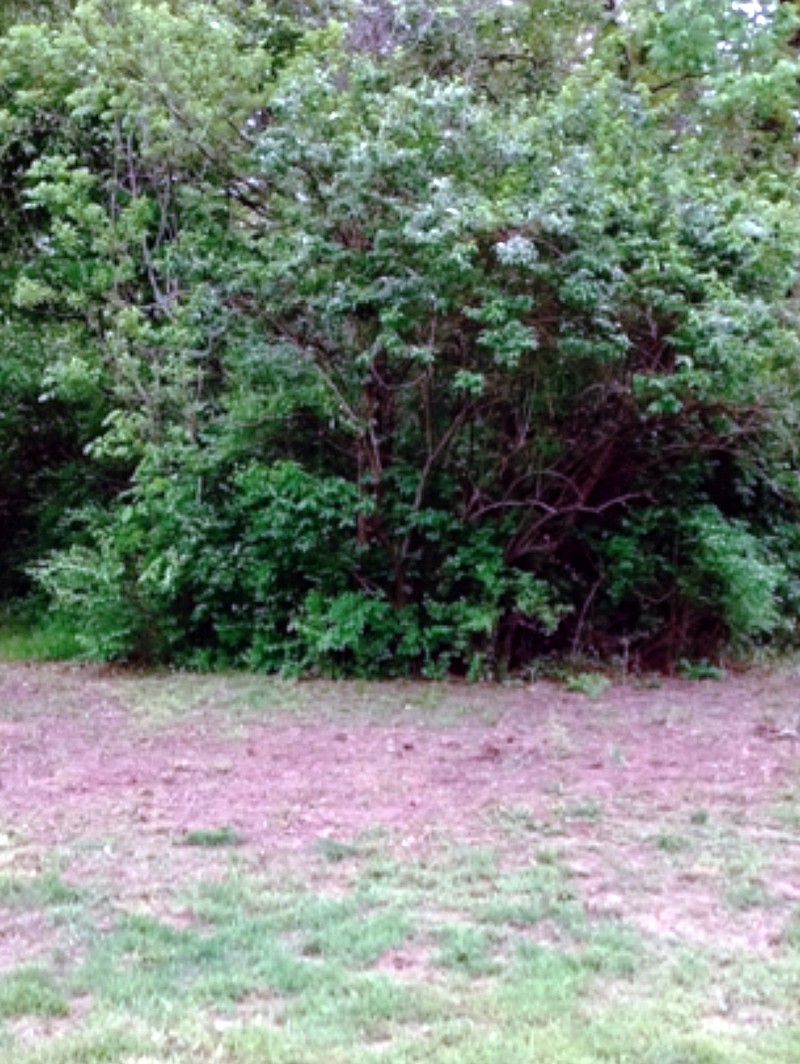Q: I'm looking for suggestions for this spot (see photo). It was full of wild blackberries and those were cleared out. The backdrop would be this woods, which has some spring flowering trees.
A: This is an ideal time to use a website tool like Missouri Botanical Garden's "Plant Finder" (www.missouribotanicalgarden.org/plantfinder/plantfindersearch.aspx).
The "Advanced Search" option allows you to select the features you desire. I'll make some assumptions to use this as an example. You want something before the woods and want it "low care." So some attractive bushes should be available that would fit this need. One could also put some weed fabric down around each, and come back and spot treat any blackberry canes that might still pop up for another year or two. Seeding grass and mowing around the bushes would also suppress those canes and other perennial weeds that may push up. I put in the following information: "ZONE- 5; TYPES - Deciduous shrub; Light Requirements - Full sun to part shade; Moisture Requirements - Medium Maintenance Requirements Low; HEIGHT - 3-5 feet; SPREAD - 3-5 feet and low maintenance."
I received 164 options. Obviously I need to refine it further. So I added having showy flowers, attracts birds, showy fruit, and resistant to deer (see question below). Now only 17 matches were returned. That sounds like a lot, but 12 of those were different cultivars of dogwoods and three were honeysuckles. The last two selections were from the same genus (Symphoricarpos), a snowberry and coral berry.
With this information, it would be easier to go to a garden center and inquire what they have available and what their recommendation might be.
Q: What is that cute white flowered ground cover outside your extension center door?
A: Thanks to Mary Williams, one of our many amazing Master Gardener volunteers, for help on this. It is Cerastium tomentosum cultivar Olympia, also known as "Snow in Summer" or "Starry Grasswort." It is a great low care ground cover that tolerates the shade. One the blooms stop, the fuzzy grayish foliage keeps it attractive.
Q: Something ate all the leaves off my arborvitae from 4 feet high all the way to the ground. This happened to several in the neighborhood in early March? We've had this planted a number of years and it never occurred before. What can I do?
A: Oh deer Bambi got you good. This happened to my folks' place in a severe winter about 12 years ago. They struck in the middle of the night and reached up to 6 feet. A whole row of them, both sides. There was snow to '"prove it." Only year they ever did it in more than 20 years. It takes years for the plant to recover its look, if it ever does. We had some extremely cold weather in early March so little green growth for deer to feed on right then. You really can't predict something like this, so is hard to do something preventative, like apply a repelling spray or wrap with burlap.
To aide in the look of the arborvitae during its long recovery, each year or so you could spray paint the brown branches green. Seymour Paint sells a product called Grass & Shrub Renew #20-602, which is advertised as not harming leaves. Another issue will be the foliage that didn't get munched, will continue to grow, and the plant will become oddly shaped. So you'll have to keep that growth trimmed back as the lower growth gradually recovers and fills in. Make a nice mulch ring around the tree and keep it fertilized, so that its growth is good. Make up a little story about the deer attack and share it with others. Each time you tell it you'll enjoy a few laughs and feel a bit better.
Thanks to Jane Kempker (from our office) and Alice Longfellow (Longfellow's Garden Center) for their comments.

